Googles 2O19 Ranking Factors You Mustn’t Miss Out!!
Google seems to be a mysterious one but it’s not. After research, in the collection of tons of data and with use of advance SEO tools to open up the mystery box of Google’s ranking factors as we don’t know how many ranking factors exactly Google uses but after so many analysis result was more than 200 algorithms which keeps on updating by time.
Do you have your company website? If yes then want to be on top in search result page?
So here are some latest 2019 well researched Google ranking factors you really can’t miss out. Yes no doubt Google keeps on updating and adapting its algorithm to give the best journey to its users with better experiences and to prohibit the black hat SEO tactics.
Google’s algorithms are the smartest and currently it used its algorithm around RankBrain, a machine learning (AI) algorithm to improve the search results.
Let’s head up to the major bullet factors listed in 2019:
- Domain Factors
- Page-Level Factors
- Site-Level Factors
- Backlink Factors
- User Interaction
- Special Google Algorithm Rules
- Brand Signals
- On-Site Webspam Factors
- Off-Site Webspam Factors
Table of Contents
DOMAIN FACTORS
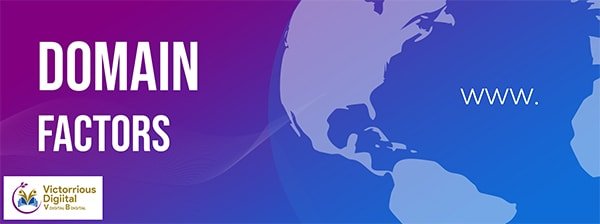
1.DOMAIN AGE: Matt Cutt says that Google is a registrar where users register and want a pre-aged domain to rank their websites but that’s not really we have to worry about. He also states that-“The difference between a domain that’s six months old versus one year old is really not that big at all.” “The difference between a domain that’s six months old versus one year old is really not that big at all.”
2. DOMAIN HISTORY: First you need to understand what domain history means? Domains are of 3 types when you decide to create your own website then first step you need to do is to purchase a domain in 3 ways-
– New Domain: Well you are lucky if you get domain on first attempt.
– Auction Domain: When Domain left out of on auction are called auction domain.
– Expired Domain: No sold domains are expired domains and it is a bad sign but age of a expired domain will give you high authority with a positive history.
Thus, domain age with good history enhance the ranking factor in SERP.
3. Keyword in top level domain: Keeping this helps to boost up but now not as much as it used to. But off course it gives a relevancy signal by bolding the keyword that appear in domain name.
4. Keyword as first word in domain: SEOMoz agrees that keeping the keyword as first word in domain boost up and target an edge over sites from whom who don’t keep it.
5. Keyword in the sub-domain name: SEOMoz’s 2011 search ranking factors agrees with the keyword coming in sub-domain boost up the rankings.
6. Domain registration link: Google’s patent states that: “Valuable (legitimate) domains are often paid for several years in advance, while doorway (illegitimate) domains rarely are used for more than a year. Therefore, the date when a domain expires in the future can be used as a factor in predicting the legitimacy of a domain.”
7. EXACT MATCH DOMAIN: Yes definitely the exact match domain will give you an edge but slightly. And if your site be a low-quality site, then it’s vulnerable to the EMD updates. Matt Cutt states that: “Minor weather report: small upcoming Google algorithm will reduce the low-quality exact match domain in search results.”
8. Public vs. private whois: The private WhoIs information may be a sign of “something to hide”. Also Matt Cutt the Googler is quoted stating at Pubcon 2006 that: “…When I checked the whois on them, they all had “whois privacy protection service” on them. That’s relatively unusual. …Having whois privacy turned on isn’t automatically bad, but once you get several of these factors all together, you’re often talking about a very different type of webmaster than the fellow who just has a single site or so.”
9. Penalized whois owner: If Google finds particular person to be a spammer then it means that they would scrutinize other sites owned by that person.
10. COUNTRY TLD EXTENSION: Keeping the Country Code Top-Level Domain (.cn, .pt, .ca) will help site to rank higher in the particular country but can limit the site’s ability to rank higher.
PAGE-LEVEL FACTORS
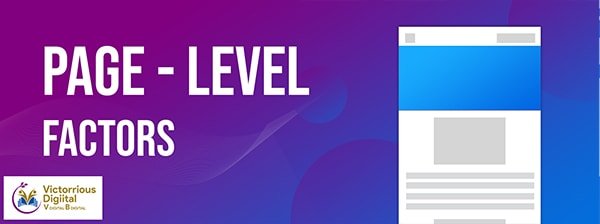
11. Keyword in title tag: Title tag is known to be a soul element of the webpage on on-page SEO and that’s why it sends the vigorous relevancy signal.
12. Title tag starts with keyword: According to the Moz, the title tag starting with the keyword performs much better than the title tag containing keyword in the end.
13. Keyword in the description tag: Google doesn’t use meta description tag but a description tag can increase and gives an impact in click-through-rate, which is a key ranking factor.
14. Keyword in H1 tag: H1 tags are the second title tags. According to the correlation study, Google use it as a secondary relevancy signal.
15. Tf-IDF: Defined in the way that: “How often does a certain word appear on a page?” The more often that word appears on that page, the more likely it is that the page is about that word. Google likely use complex version of TF-IDF.
16. Content Length: Content in a long form benefits in SEO. As it covers the wider breadth and are likely preferable in the algorithm and simultaneously dominates the shorter, superficial articles. Indeed, Micro site Master found that content length correlated with SERP positions.
17. Table of Contents: Use of listed and linked table of contents help the Google to understand the page’s content better and can also results in site links.
18. Keyword Density: In the content the keyword density must be around 2-3% .Google may use it to determine the topic of a webpage. But going overboard can give harm the page and give a negative impact.
19. Latent Semantic Indexing Keywords in Content (LSI): Using a latent semantic table of contents can help Google to understand better and extract meaning from words with more meaning. It can also results in site links as well as the presence and absence of this may affect the content quality signal.
20. LSI Keywords in Title and Description Tags: LSI keywords in meta tags in a webpage content probably help Google distinguish between words and it’s multiple possible meanings. It also gives a relevancy signal.
21. Page Covers Topic In-Depth: The pages that cover the content in depth are likely to have an edge vs. pages with the contents covered partially. And there is huge relation and bonding between depth of the content and Google rankings.
22. Page Loading speed via HTML: Google revamped their page speed tool as a ranking factor to give the more insights and increase the page loading and landing time. Search engine spiders estimate your site speed accurately depending upon your page’s HTML code.
23. Page Loading Speed via Chrome: Google may use chrome user data to get a better handle on page’s loading time. In this way they can analysis and measure the speed how quickly a page actually loads to the users.
24. USE OFAMP: Google addressed this that AMP don’t act as an ranking factor until used as Canonical page to built the site quality. Google shows non-AMP content at the top of the mobile results for the content which is most relevant, while at the same time highlights AMP results and inviting users to engage with AMP rich cards
25. Entity Match: Great if the “entity” or a query searched by the user gets matched to the page’s content then surely that will boost up the rankings for that keyword.
26. Google Hummingbird: Humming Bird: Meant for speed and accuracy. Aimed at making interactions more human. Makes search engine for better understanding the concepts and relationships between the keywords. Focused on page content, making search results more relevant, and looks at the authority of a page. Thanks to Hummingbird: new search algorithm, Google now can better understand the topic of a webpage.
27. Duplicity in the Content: Deceptive practice of using duplicate or similar content gives the poor impression on the visitor to the page content when he sees the duplicate content and results in negative impact on a site’s search engine visibility.
28. Rel=Canonical: Google states that : “Google tries hard to index and show pages with distinct information”. If you have an individual webpage linked with multiple URL’s or distinctive webpage with similar type of content then Google read it as a duplicate content and may penalize you accordingly. To avoid the penalization and duplicity use Canonical tag.
29. Image Optimization: Google images provides visual information and creates title and snippet to explain the best for the user query with the help of file name, alt text, title, description, & caption.
30. Content Recency: Google Caffeine a new web indexing provides 50% latest time- sensitive web searches with the largest collection of content. This feature highlights the date of last update of a certain pages.
31. Magnitude of Content Updates: Making a change in the whole content serves the freshness factor instead of making a change in few words.
32. Historical Page Updates: Likewise updating a content on a page, the webpage must also undergo for a change over a time daily, weekly, or yearly. Oscillating the page keeps the freshness with new updates.
33. Keyword Prominence: Exact match keyword on your page in meta title, meta tag, keyword in H1 etc. is an exclusively strategic planning for Google rankings.
34. Keyword in H2, H3 Tags: Googler John Meuller states that: “These heading tags in HTML help us to understand the structure of the page.” Keyword in H2, H3 tags may down the rank of your page so always try to keep your keyword in H1 tag.
35. Outbound Link Quality: After monitoring keywords conclusion says that Out Going Links results the positive effect in SEO. The page gets connected to the different relevant page through a link outside the same domain called an Out bound Link.
36. Outbound Link Theme: If you have your content about hotels that is linked with an online shopping page, then Google will understand that your page is about shopping page but not of hotels. Google use your content to links as a relevancy signal.
37. Grammar and Spelling: Does proper grammar and spelling plays the key role in ranking factor? Answer is definitely Yes! Earlier maybe it was not important but it act as a quality signal.
38. Syndicated Content: Similar to the content duplicity. No doubt copy content down your page rankings from any indexed pages.
39. Mobile-Friendly Update: “Mobilegeddon” update refers to the websites to display well on mobile sites (smartphones & other devices). This update doesn’t affect searches made from desktop or laptop sites
40. Mobile Usability: Websites which are easily landed on users mobile sites gives an edge to the “Mobile-First Index” on Search Engine.
41. Hidden Content on Mobile: Hidden -Content on mobile sites Google recently stated hidden content on mobile is OK. Hidden content get not indexed as compared to the visible content.
42. Helpful Supplementary Content: Supplementary Content enhances webpage and Google also focusing on the type of relevant supplementary content. It shouldn’t include destructive ads because it hinders the quality of the webpage as Google is putting a lot of weight in for their quality raters.
43. Content Hidden Behind Tabs: Content within the page click to expand the content are discounted. They don’t count on and don’t help to rank higher because Google finds that you are hiding content from users.
44. Number of Outbound Links: Too many external Outbound links hamper and down the page rank.
45. Multimedia: Content enriched with multimedia like Images, Videos and other act as a relevancy signal. Also that content helps to improve quality of the page to rank higher.
46. Number of Internal Links Pointing to Page: Total number of internal links in the page defines the importance of the page in relation to other pages.
47. Quality of Internal Links Pointing to Page: Internal links on the reliable pages as compared to the pages having low rank have the strong effect on domain page.
48. Broken Links: Broken link: When web developers delete the webpage, use incorrect URL or make a change in URL then a Broken Link generates and having more broken links signifies the neglected site.
49. Reading Level: Google determines the reading level of your content on webpage. It gives you the level status of Basic, Intermediate, Advanced. Among all basic level helps you to rank high.
50. Affiliate Links: Affiliate links don’t hamper your webpage at all. But if you have too many then Google pays attention towards it. The “thin affiliate site” or pure site doesn’t adds up much value to web users. Good affiliate links helps you to stand out differentiates your site.
51. HTML ERRORS: HTML errors lower down the quality of your webpage. Webpage with no error coding increases the quality signal of your webpage.
52. Domain Authority: Domain Authority is the building block of SEO ranking factor. The Authorization of the domain by owners name is called Domain Authority. Higher the Domain Authority higher the reliability of that webpage.
53. Page Rank: Higher Domain Authority on a webpage builds reliability and trust factors as compared to the lesser Domain Authority and boost the ranking of a page.
54. URL Length: Measure of URL length is one of the factor of quality signal of your webpage. Short the URL length creates an edge on SERP.
55. URL Path: Not much but closer the URL to homepage shoots slight authority to represent good sites in SEO ranking factors.
56. Human Editors: Google filed a patent for a system that has given rights to human and allow them to make a change or edit to affect the page rankings yet it is not confirmed.
57. Page Category: Page Category relevant to the query search boost the relevancy signal and page ranking as compared with the page with unrelated category page.
58. Word Press Tags: According to Yoast.com: “The only way it improves your SEO is by relating one piece of content to another, and more specifically a group of posts to each other.” Word Press tags enhances the quality signal.
59. Keyword in URL: Google: Keywords in the URL are very small ranking factor but with keyword in right place generates relevancy signal somehow it helps for ranking factor.
60. URL String: URL Strings are visible and scanned by Google to get a subject of what a page is about and give a hand on influencing the ranking factor.
61. References and Sources: References and Sources no doubt outbound the webpage quality and ranking at right place connectivity. However again Google denied in the fact of upgrading the page ranking on basis of outbound references and links.
62. Bullets and Numbered Lists: Using Bullet points and Number lists in the content of your webpage creates user interface and make it able to read and understand properly.
63. Priority Page Sitemap: Priority Page Sitemap number lie between 0 to 1. Priority Page Sitemap is set to 0.5 and it is quite important in ranking factor.
64. More Outbound Links: According to the aforementioned Quality rater document: “Some pages have way, way too many links, obscuring the page and distracting from the Main Content.”
65. Quantity of Other Keywords: If the page ranks with the weight-age of rest other keywords of your page then it gives a positive and a good sign to Google internally.
66. Page Age: Your page age matters for outranking factor but Google needs the fresh contents too so therefore you need to update your content in course of time.
67. User Friendly Layout: Creating User Friendly layout of your page definitely helps to rank on the top of SERP. Google Quality Guidelines Document says: “The page layout on highest quality pages makes the Main Content immediately visible.”
68. Parked Domains: Google updation in Dec2011 says that it lowered the page visibility of Parked Domain. Parked Domain means multiple domains pointing to the same website. The Parked Domain lose the value very fast and intend to lose the SEO ranking with lowering the domain value.
69. Useful Content: There is a difference between popular and quality content pages. Only the rank of a page doesn’t matter at all. Not necessary that higher quality content is the useful one as Google may read the difference between useful and long quality content.
SITE-LEVEL FACTORS
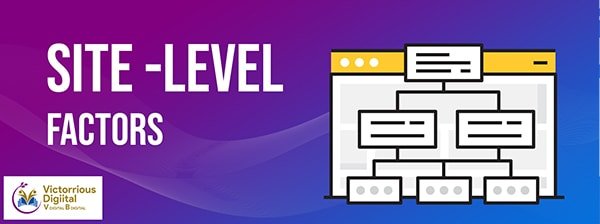
70. Value and Unique Insights through Content: Google stated that they’re happy to penalize sites that don’t bring anything new or useful to the table, especially “thin affiliate sites”. So putting a useful content with uploading updated time with a course of time helps Google to find it as afresh content.
71. Contact Us Page: The aforementioned Google Quality Document states that they favor for an “appropriate amount of contact information”. You must keep in your mind that your contact information must matches your whois information.
72. Domain Trust Rank: SEOs believes that “Trust Rank” is highly important among every ranking factors and a recent filed Google patent titled “Search result ranking based on trust” seems to back this up.
73. Site Architecture: Site Architecture: Define how users and engines find way to your website. It help Google to index the pages, gives access to Googlebot, subjectively arrange pages.
74. Site Updates: John Mueller from Google said Google’s algorithms doesn’t give a benefit to a site that produces more content, more frequently than other sites. Publishing or Site Update new page everyday won’t make your site to rank higher to the one publishing the content per week. The quality and uniqueness in your content may help to rank your webpage on top.
75. Sitemap: A sitemap is again one subject of concern for the quality site visibility and to index your webpage easily.
76. Site Uptime: Landing time on your webpage plays an important factor for indexing your webpage . Lesser the landing time Higher the user interaction and indexing of your page.
77. Server Location: Server location affects your site ranking according to different geographical regions. More important for geo-specific searches for the query by users.
78. SSL Certificate: Google believes site having HTTPS as a ranking signal in comparison with site having HTTP in it. HTTPS secures the data content on your site and help from malware attack. According to Google, HTTPS only acts as a tiebreaker.
79. Terms of Service and Privacy Pages: These two pages (Terms of Service and Privacy Pages) informs Google that a site is a trustworthy on the internet. It also improves the sites E-A-T
80. Duplicate Meta Information On-Site: Using a duplicate meta information on your site lower your down your page visibility. Google Search Console warns you for having many of them.
81. Breadcrumb Navigation: This is a structure of letting users to know where they landed and hence makes it user friendly one. Google states that: “Google Search uses breadcrumb markup in the body of a web page to categorize the information from the page in search results.”
82. Mobile Optimized: According to advance SEO tactics, Google started penalizing on the sites which aren’t user friendly or not works in user interface. It’s necessary to have a mobile site.
83. YouTube: YouTube videos are given offered the best attention in the SERPs . Search Engine found that YouTube.com traffic raised the total number of traffic as compared to the Google Panda Algorithm.
84. Site Usability: A site that’s difficult to use or to navigate by reducing time increase bounce rate on your site may become the poor reason to lower down your webpage ranking in SERPs.
85. Google Analytics and Google Search Console: Having these two programs installed on your site can improve your page’s indexing is actually a myth by Google. Google don’t use them in the part of search ranking factors.
86. User reviews as Site reputation: Site’s reputation on sites like Yelp.com plays the vital role in Google’s algorithm and Google uses online reviews when one site get caught ripping off customers in anyway.
BACK LINK FACTORS
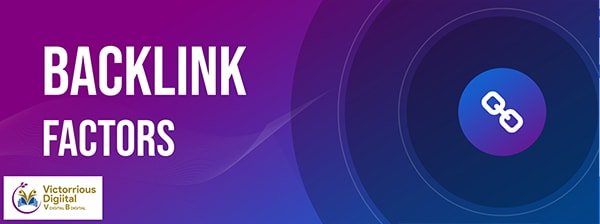 87. Linking Domain Age: Backlinks coming from aged domains may be more dominating and strong than Backlinks coming from new domains.
87. Linking Domain Age: Backlinks coming from aged domains may be more dominating and strong than Backlinks coming from new domains.
88. Hashtag # of Linking Root Domains: Total number of referring domains is directly proportional to the Google ranking factors. Here is a summary from the industry study of 1 million Google Search results.
89. # of Links from Separate C-Class IPs: Links from separate class-C IP addresses adds up a wider breadth of sites linking which can help to grow rich in ranking factors.
90.# of Linking Pages: The total number of linking pages is directly proportional to the ranking factors. More the linking pages merrier the ranking factor and vice-versa.
91. Backlink Anchor Text: Anchor Text : clickable text in a hyperlink. More the links more the merrier. Google’s original algorithm: “First, anchors often provide more accurate descriptions of web pages than the pages themselves.”
92. Alt Tag (for Image Links): Alt text performs as an anchor text or as an anchor link for images. They give the duplicate names not seen by the user but a factor use to increase SEO ranking factor.
93.Links from .edu or .gov Domains: Matt Cutts stated that TLD doesn’t factor into a site’s importance. As well as Google has said they ignore lots of Edu links. SEOs still thinks that there’s a special place in the algorithm for .gov and .edu TLDs which is actually not.
94. Authority of Linking Page: Authority of the page is a major ranking factor till now and it must be there for a good quality and relevancy signal.
95. Authority of Linking Domain: Just like the linking Authority page is important similarly linking the Domain Authority is as important.
96. Links from “Expected” Websites: SEO believes that Google won’t rely your website until you get linked to a set of expected sites.
97. Links from Bad Neighborhoods: You must not go by the “bad neighborhoods” links which comes up from finding a shortcut key in SEO that may lower your page ranking.
98.Guest Posts: Allowing Guests to post a blog in another’s person blog. Simultaneously building a relationship with the blogger by getting a backlink from another website for increasing traffic.
99. Links From Ads: As per the Google, links from ads should be nofollow as it will help Google to identify and filter out the follow links from ads.
100. Homepage Authority: No doubt on linking to homepage site gets an edge weight which helps to upgrade the ranking factor of your webpage.
101. Nofollow Links: It is the most controversial topics in SEO. Google official word on the matter follows for certain cases otherwise Google says that “In general we don’t follow it”
102. Diversity of Link Types: Links coming from a single source may be comment, blogs etc. in comparison with the links coming from several other sources or pages signifies the unnatural page.
103. Sponsored Links: Try to avoid the words like “Sponsors”, “Link Partners” and “Sponsored Links” in your content put your webpage quality down.
104. Contextual Links: Links included or put in between the content somewhere influence the quality and page ranking factor as compared to the links included on an empty page or somewhere else.
105. Excessive 301 Redirects to Page: 301 redirection is necessary from time to time if needed truly and you are never coming back or else we can say it’s a permanent change. It is good when we are redirecting our n number of pages to a new page on new website but it is bit dangerous when we make a chain of redirection of our one page into multiple chains of redirection. Matt Cutt explained it well in his video
106. Internal Link Anchor Text: Internal links act as the navigator in the same domain shifting user from one page to another. That’s why it act as a relevancy signal but not as much as external link does.
107. Link Title Attribution: Link TITLE is an attribute use to add extra information by duplicate name gives more clarity to find where the user is in the anchor text behind. Use it wisely, don’t use when no need it may take the user at same place twice and is a weak relevancy signal.
108. Country TLD of Referring Domain: Using country links from particular country domain with extensions like .co, .uk, etc. gives the high relevancy signal.
109. Link Location In Content: Links used in the beginning of the content is more relevant to the Links used at the end to experience better the relevancy signal and ranking factor .
110. Link Location on Page: Link location on the page is as important as link present in the content. Link present in the page’s content is powerful as compared to the link present in the footer or sidebar area of the page.
111. Linking Domain Relevancy: Relevancy matters a lot therefore getting a relevant link to your webpage gives the high relevancy signal as compared to the one with unrelated and irrelevant link.
112. Page-Level Relevancy: Similarly the relevant link from the domain the relevant page also adds up more value.
113. Keyword in Title: Google 100% gives the more attention to the page who has their keyword in the title of the page to increase the ranking factor.
114. Positive Link Velocity: Site with positive link velocity signifies the popularity of your webpage.
115. Negative Link Velocity: On the other side, negative link velocity hamper the ranking factor as it signifies the decreasing popularity of your webpage.
116. Links from “Hub” Pages: Hilltop Algorithm gives an idea to find the relevancy of a particular keyword with relevant information. Links from top rated resources increase the relevancy signal and quality factor.
117. Link from Authority Sites: Link from an authority site prior the ranking factor than a link from relatively unknown sites which don’t carry authority as it gives a negative sign to the search engines.
118. Linked to as Wikipedia Source: No doubt the links from the Wikipedia improves the quality and enhances the ranking factor of your webpage
119. Co-Occurrences: Co-Occurrences is the key factor for improving the rankings. The words that use to appear nearby your back-links helps the Google to understand what the page is about.
120. Back-link Age: Age is a factor in the case of back-link. The older the back-link boosts the ranking of your page as compared to the fresh back-link.
121. Links Real Sites vs. Spamblogs: Links from the real sites given more preference to the Spam blogs or Spam site.
122. Natural Link Profile: Page and Profile with a natural link are preferably given more attention from one which use black hat tactics to build links.
123. Reciprocal Links: Avoid Reciprocal Link they down the page rankings. These links are done by the handshake of 2 partners to show each other’s link on each of their sites.
124. User Generated Content Links: Malicious users generate spam content which can be easily identified by the Google. This malpractices can hurt your page ranking factors to the most.
125. Links from 301: Matt Cutt says in his video that the 301 link(permanent redirection) is almost same to the direct link. According to Matt Cutt on 301 redirection page looses 10-15% of ranking but use 301 redirection or direct according to your need as they are almost same.
126. Schema.org Usage: Schema.org used to markup HTML by webmaster. On -Page markup helps Google and many search engines to understand & provide the better search results. The pages which use this micro format boost the SERP Click Through Rate.
127. Trust Rank of Linking Sites: Measure of trust depends on the page ranking factors and linking those sites which are trustworthy upgrades your ranking factors and trustworthiness too.
128. Number of Outbound Links on Page: Definite & relevant outbound links raise the ranking factor in comparison to n number of multiple outbound links which may be or may not be relevant to your content.
129. Forum Links: Forum links are the bad names if used in your page content somewhere as it may count as black hat tactics of SEO.
130. Word Count of Linking Content: Count of words nearby 2000 with informative data act as the ranking factor in comparison with 20-25 packets of snippets.
131. Quality of Linking Content: Off course when linking plays the role for SEO rankings then definitely the content from that link also matters a lot. The less informative data or irrelevant data rank your page down.
132. Site Wide Links: If on your website you have some side widw links for ex. a cheap rent flat, then it signifies the spam link to the Google and irrelevant to the user also which lowers the ranking factor but having a relevant with some privacy policy is good.
USER INTERACTION
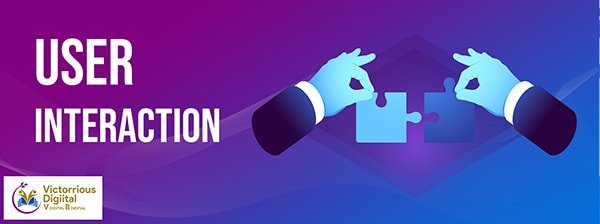 133. RankBrain: RankBrain is an AI which actually tries to find the meaning of user’s query and in relation to that serves the result page accordingly. If any unknown query comes which Google don’t understand then it tries to find the similar search related to that query.
133. RankBrain: RankBrain is an AI which actually tries to find the meaning of user’s query and in relation to that serves the result page accordingly. If any unknown query comes which Google don’t understand then it tries to find the similar search related to that query.
134. Organic CTR for a Keyword: No doubt if a page is getting more CTR than its organic click through rate is also higher for a particular word which matters a lot in SERP.
135. Organic CTR for All Keywords: Organic click through rate is an advance web ranking factor and well and good if your CTR for all your keywords is high then it influence your SEO ranking factor.
136. Bounce Rate: Like in throwing a ball a bounce rate remains less means returning time of a ball but here in the returning time of a user from your site must be more which gives a signal to Google how interactive your website is means your Bounce rate must be more for better page ranking.
137. Direct Traffic: More traffic nearby your website means a well interactive and informative website you have. Thus , it gives the right signal to search engines for Google ranking factors.
138. Repeat Traffic: Like a customer returning back to your shop is a good sign of good product you have likewise repeated traffic boost your ranking factors automatically.
139. Pogo Sticking: Pogo Sticking is one type of bounce rate for searching a query. On spending 5 min on your website user moves to another search result with no satisfaction from your site gives a bad signal in ranking down of your webpage.
140. Blocked Sites: Google stopped this feature but still Panda algorithm uses it because it depends from user to user to block the site which are irrelevant according to them and it affects the Google ranking to that website.
141. Chrome Bookmarks: Google fetches data from Chrome and if your website present in the Chrome’s bookmark then definitely it is going to boost your ranking factor.
142. Number of Comments: Comments and Reviews matters a lot if your website has a lots of comments and reviews then it will gain more attention with page ranking factors.
SPECIAL GOOGLE ALGORITHM RULES
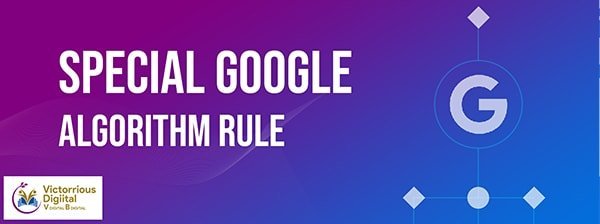 143. Dwell Time: Duration spend by user on your website is a dwell time which is a main factor. It’s necessary to increase the traffic on your website with long duration time that is again a ranking factor for SEO.
143. Dwell Time: Duration spend by user on your website is a dwell time which is a main factor. It’s necessary to increase the traffic on your website with long duration time that is again a ranking factor for SEO.
144. Query Deserves Freshness: Query Searches by users sometimes needs freshness which is an algorithm made to identify the users that he/she needs a fresh content on result page.
145. Query Deserves Diversity: If a user is searching for a query like how to make tea? then if in result page it includes a video then definitely it is a diverse result by SERP to the user and act as a ranking factor.
146. User Browsing History: Browsing history of a user means navigation from one page to another. Data in browsing history if includes your website then definitely it will increase your page ranking factors.
147. User Search History: When a particular search is done by user if included your webpage again increase your ranking factor.
148. Featured Snippets: Featured Snippets are the summary on the top of the SERP which includes paragraph, title or lists and if your keyword includes in the snippet that becomes the reason to increase the ranking factor.
149. Geo Targeting: Google gives attention to your websites with a local server IP and also a country specific domain with a name extension.
150. Safe Search: Safe search mode on for the users if user don’t want to see the webpage containing abusive, vulgar words. And if user report for any website that it will down the ranking factor.
151. Google+ : Google+ is about to vanish soon but still it’s alive and the authors and sites linked to this will show the higher content quality results for the query by a user.
152. YMYL Keywords: Google has 2 measurements E-A-T and Y-M-Y-L to create better pages for marketers. These have high quality standard pages if users searches for these type of searches.
153. DMCA Complaints: DMCA is a legal law to complain for the duplicate contents in the website for the copyrights content. If anyone complains for it then it will rank down the copied content webpage .
154. Domain Diversity: So many diverse domain on your website with positive and subjective content on it will help you as a boosting factor for page rankings.
155. Transnational Searches: Google displays certain diverse results for transnational searches which already means that the site is containing transaction platform.
156. Local Searches: Local searches, Google displays face to face search by the customers in a local area at national level for transaction.
157. Top Stories box: Some keywords targets and trigger for top stories box in the SERP which gives a diverse result to the user and enhance the quality and ranking signal if that stories include the keyword for your page.
158. Big Brand Preference: Matt Cutt however stated in the video that , Google is not actually giving big brands a boost. It serves the best results for the users but for certain keywords they too provide big brand results in front of the users.
159. Shopping Results: Google show Shopping results in SERPs for shooting the keywords in ranking coming in that shopping diverse results on the query searched by the user.
160. Image Results: Google display images for some query results of the user and act as a key ranking factor.
161. Single Site Results for Brands: Google may show 2 results from the same domain who were brand-oriented and several more results from the same domain.
162. Payday Loans Update: Matt Cutt says that this is an algorithm to clear and clean up the spammy query search from users along with the spammy sites
BRAND SIGNALS
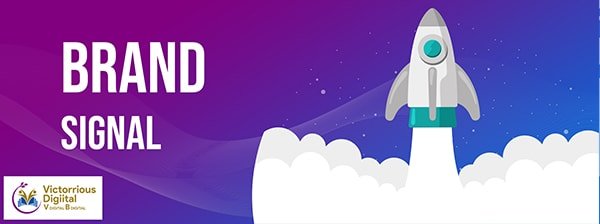 163. Brand Name Anchor Text: The anchor text linked with branded sites in it increase the quality and brand signals with a good quality signals.
163. Brand Name Anchor Text: The anchor text linked with branded sites in it increase the quality and brand signals with a good quality signals.
164. Branded Searches: User if searches for any brand query which is linked through your website then it gives Google a signal that your site is a branded site and it enhances the ranking factor.
165. Brand + Keyword Searches: No doubt if the user search for a brand query and it includes your keywords then it is a good sign for google ranking factors.
166. Site with Facebook Page and Likes: If your site has facebook pages with lots of likes then it gives a positive signal in quality and ranking factors.
167. Site with Twitter Profile with Followers: If your site has Twitter profile with many followers then it also gives a positive signal in quality and ranking factors and signifies the popular signal
168. Official Linkedin Company Page: If your site has LinkedIn page with many connections for B2B business handshakes raise the ranking factor by rising the ranking factor.
169. Known Authorship: On February 2013, CEO of the Google name Eric Schmidt claimed that: “Within search results, information tied to verified online profiles will be ranked higher than content without such verification, which will result in most users naturally clicking on the top (verified) results.” Verified authorship gain a lot of weight as compared to the unverified profiles with authorship and plays a vital role for ranking factor.
170. Legitimacy of Social Media Accounts: Social Media having 20,000 followers and rare 2 posts in comparison with another 10,000-followers have a quality and strong account with lots of user interaction on it which is a growing factor SEO rankings.
171. Brand Mentions on Top Stories: Yes big brands highlighted in Top Stories on a site every time with few brands have feed of news on their site is a good quality signal for popularity and good quality signals.
172. Unlike Brand Mentions: Branded page or sites are fully mentioned as brands if they don’t have a hyperlink in it and Google also term them as a brand.
173. Brick and Mortar Location: Primer duty of Google is to verify for the brand pages or websites in their location to verify that they are the real brands or not by looking at the site location.
ON SITE WEB-SPAM FACTORS
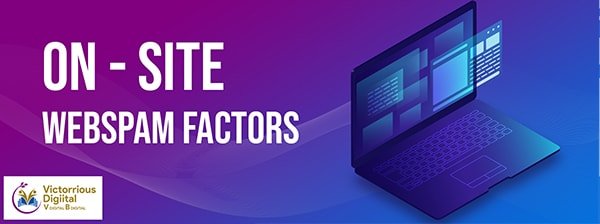 174. Panda Penalty: Sites having low quality content are less likely to get visible on the SERP and main aim of Panda algorithm is to eliminate the thin content on SERP.
174. Panda Penalty: Sites having low quality content are less likely to get visible on the SERP and main aim of Panda algorithm is to eliminate the thin content on SERP.
175. Links to Bad Neighborhoods: Avoid linking to the bad neighbors which may include spammy sites or links and may degrade your webpage quality and ranking.
176. Sneaky Redirects: Sneaky redirects is the process of sending or navigating the user from one URL to another for which user has not requested for which may blow your site down or may happen your site get de-indexed.
177. Popups or Distracting Ads: From the name it is clear that the distracting ads on your site will lower you down rankings.
178. Interstitial Popups: Google penalize sites which display full page “interstitial” popups on the mobile sites of the users becomes the bad signals for your website.
179. Site Over-Optimization: Google penalize on over-optimizing their site which may include keyword stuffing, header tag stuffing, excessive keyword decoration in order to deploy the page ranking too.
180. Gibberish Content: Content which are irrelevant and are filled with rubbish / gibberish inside helps Google to filter out from the ranking factors.
181. Doorway Pages: The pages which diverts the user from one page to other with the page that user was not looking for called a Doorway pages gives a bad impression again and hurts you in Google rankings.
182. Ads Above the Fold: Don’t feed your webpage with lots of ads that will decrease the user interaction factor and brings you down.
183. Hiding Affiliate Links: Google penalizes for the affiliated links on your website which brings you down in the ranking factor also and a bad signal for your page.
184. Fred: Fred a nickname given to a series of Google updates started in 2017 and it targets on low value content sites with the checking of quality of websites.
185. Affiliate Sites: like the affiliate links affiliate sites don’t get the good treatment by Google. Google penalize and lowers the rankings.
186. Auto generated Content: Google pumps out the auto generated content coming from the computer site results in penalizing and ranks you down.
187. Excess PageRank Sculpting: Page Rank Sculpting is a process of passing the link juice to the most important page internally linked with high search results but having it on excess may hurt your website when coming to ranking factor.
188. IP Address Flagged as Spam: Natural and pure IP address is necessary otherwise it will harm your all pages in a negative way.
189. Meta Tag Spamming: Lots of keyword stuffing in meta tags insists Google to think you’re adding keywords to title and description tags which can hit your site with a penalty.
OFF SITE WEB SPAM FACTORS
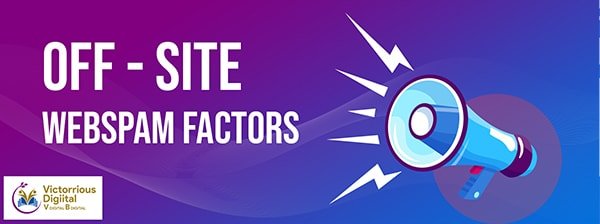
191. Unnatural Influx of Links: Influx or unnatural links is a sign of phony links which means they are the artificial links termed as scam links that degrade the rankings.
192 Penguin Penalty: Penguin algorithm increases the backlinks and increases the traffic but penalizes the bad, reciprocal links.
193. Link Profile with NO-Low Quality Links: Low-quality links may be used by the spammers or in a black hat SEO tactics which decrease the profile if linked with this type of links so try to avoid 100% low-quality links.
194. Links From Unrelated Websites: No. of backlinks from irrelevant websites divert the user and give a bad sign to Google for SERP rankings.
195. Unnatural Links Warning: Google sends 1000 Google Search Console notices which are detected unnatural links. Not every time but most of the time it drops down the rankings.
196. Low-Quality Directory Links: By the name itself the low quality and odd backlink will drop down your website and as well as a bad signal of quality which penalizes you.
197. Widget Links: Widget links connect you to the blogs or sites which you want to share with your users but these links can be against the webmaster guidelines. You can put noFollow link otherwise Google will treat spammy sites with unnatural links and may penalize.
198. Links from the Same Class C IP: Having an unnatural number of links from same IP server signifies the Google that your link is from blog network and hit you with penalty.
199. Google Sandbox: New sites flooded with many links inside are put in Sandbox for temporary period of time. This filter prevents spammers to manipulate Search Results in SERPs.




